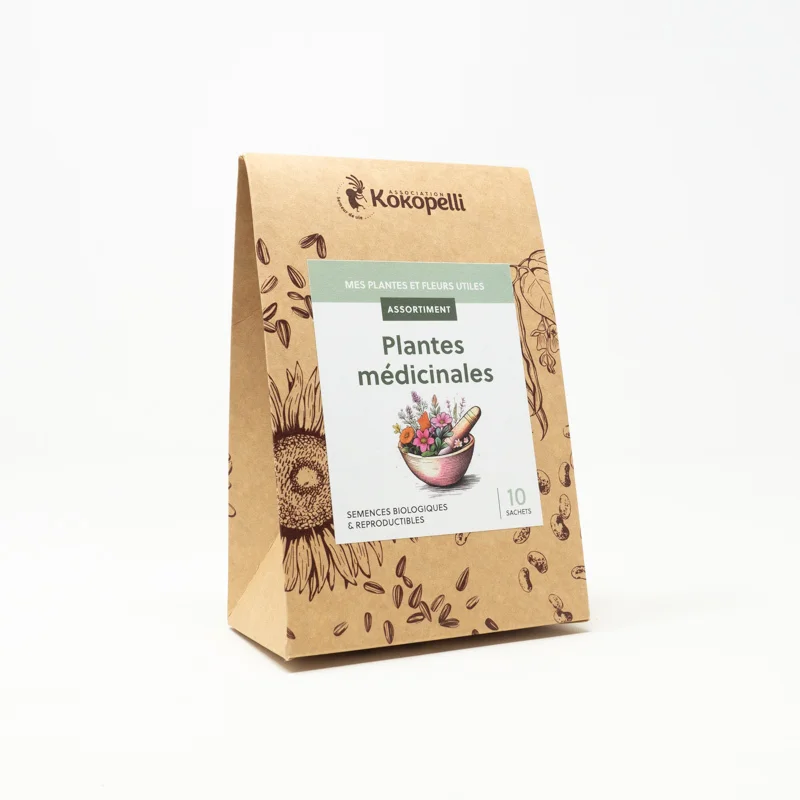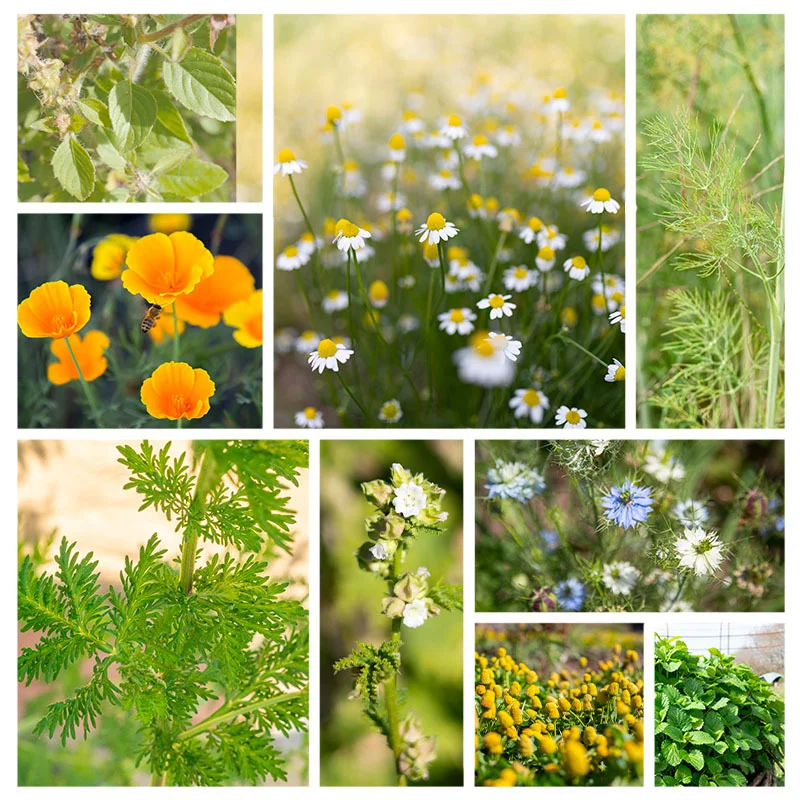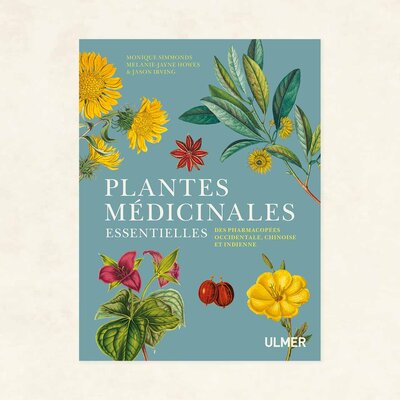Assortment - Medicinal plants
Enter the fascinating and ancient world of medicinal plants, with this selection of 10 varieties with multiple benefits. Cultivate your own natural family pharmacy dedicated to health and well-being, and transform your garden into a living pharmacopoeia.
Make herbal teas, infusions, mother tinctures or simply incorporate them throughout your cooking to relieve coughs, soothe toothache, calm stress, promote sleep, boost the immune system and much more.
Grow these medicinal plants in a chemical-free environment to benefit from their exceptional qualities.
Seeds from the Medicinal Plants assortment can be sown from February to November, depending on the variety.
This selection of medicinal plants introduces varieties that are essential to family pharmacopoeia into gardens and balconies, allowing people to reappropriate them and, why not, pass on their knowledge and use.
Varieties selected for the "Medicinal Plants" Assortment
Tulsi is one of the most essential plants in India's three traditional systems of medicine and pharmacopoeia - Ayurveda, Unani and Siddha. For thousands of years, Tulsi has been used to treat bronchitis, diarrhoea, dysentery, arthritis, malaria, insect bites, eye problems, dermatological problems, colds, headaches, inflammations, gastric problems, poisoning and more. Tulsi also has properties for treating cancer, sterility, diabetes, microbial, bacterial and fungal infections, and heart problems. It is also an analgesic, anti-spasmodic and antipyretic. In short, it's an adaptogen, an antioxidant, an "elixir of life", reputed to prolong life. Its seeds are sometimes worn on the body as a protective charm: Tulsi is reputed to purify the aura.
This species, with its soothing properties, boasts beautiful white flowers and broad, green leaves with curly tips and a mild flavor. Young, they can be eaten raw in salads or cooked like spinach. Older ones can be enjoyed cooked.
The double flowers of this variety are pink, lilac or white, without ever having a black spot in the center. The petals are like crepe paper.
One of the most renowned plants in Ayurvedic pharmacopoeia. Its roots are used as a sedative, tranquilizer and aphrodisiac. It is an adaptogenic plant with numerous anti-cancer, anti-inflammatory and other medicinal properties. It fortifies the immune system and regulates sexual functions.
This highly melliferous variety thrives on alkaline soil and reaches heights of up to 60 cm. It produces an abundance of pink flowers, arranged in a crown along the stems. Its leaves, with their delicious lemony fragrance, are ideal for salads, fish dishes, etc.
This species of Artemisia, known in Chinese pharmacopoeia as "Yin Chen Hao", is associated with the liver, stomach, spleen/pancreas and gall bladder meridians. It is one of the most ancient remedies for jaundice. It is traditionally used as an antioxidant and to treat cancer and malaria.
The 22 species of the Agastache genus contain mainly terpenoids and phenylpropanoids. It is a medicinal plant used by the Meskwaki people for diuretic decoctions.
Para cress, also known as "Bredy Mafana" or "Brède Mafane jaune", is native to South America. It has long been cultivated in the Mediterranean regions of Europe. It is widely consumed in tropical regions, and is the main ingredient in Madagascar's national dish, "roumazava". Raw flowers and leaves have a surprisingly hot, pungent, peppery and refreshing taste. This plant, used as a vegetable and condiment, is in fact a medicinal plant renowned in many cultures around the world for its ability to relieve dozens of pathologies. Many preparations are currently available in the form of mother tinctures, extracts and more. The aerial parts or roots are used. In the United States alone, over thirty patents have been granted since 1976 on its medicinal properties. In traditional medicine, the Spilanthes genus has been used to treat throat pathologies: toothache, mouth ulcers, gingivitis, sore throats, headaches, rheumatism and muscular pains, fevers, colds and coughs, liver problems and intestinal problems: diarrhea, constipation, gastritis, jaundice, etc., viral, bacterial and fungal pathologies as well as tuberculosis and pneumonia, urinary problems and kidney stones, parasite problems. In some cultures, Spilanthes is also considered a fortifier and aphrodisiac. More recently, its antioxidant properties have been highlighted in the fight against cancer and other mutagenic influences. The 5 most biologically active groups, with regard to its medicinal properties, are terpenoids, flavonoids, coumarin, alkamides and polysaccharides.
This highly aromatic and medicinal perennial shrub has fine leaves and beautiful inflorescences with a multitude of small, blue-purple, melliferous flowers.
From spring to autumn, this variety offers a mixture of orange and yellow flowers, single or double, that are edible, melliferous, tinctorial and have many medicinal virtues.












